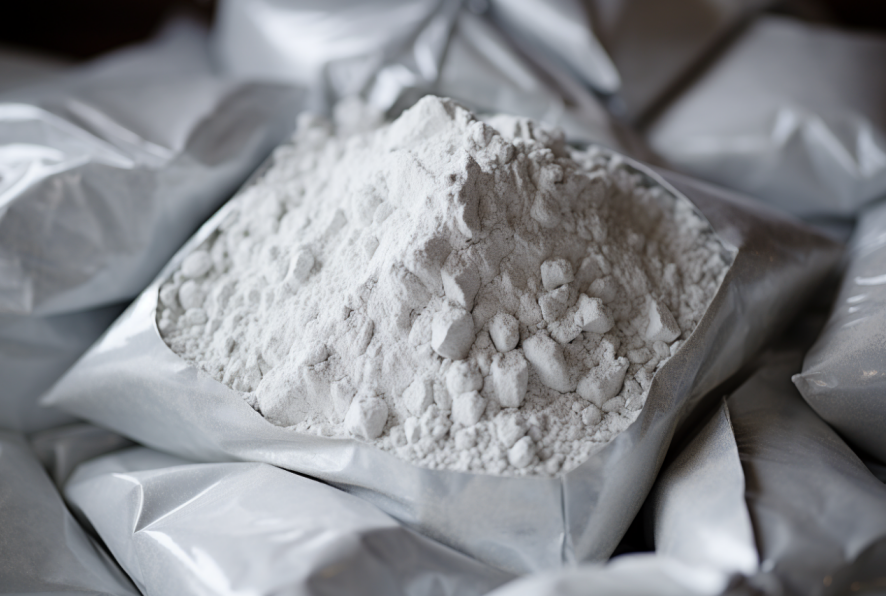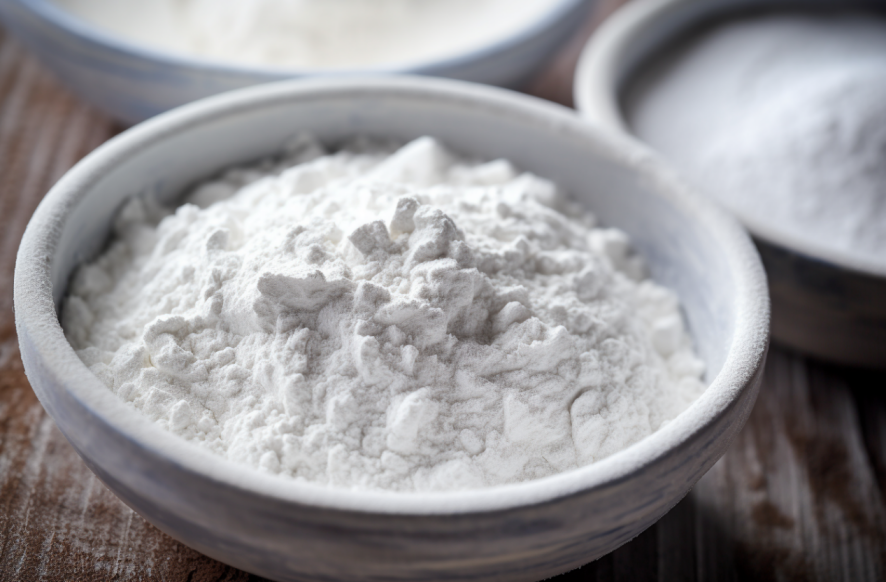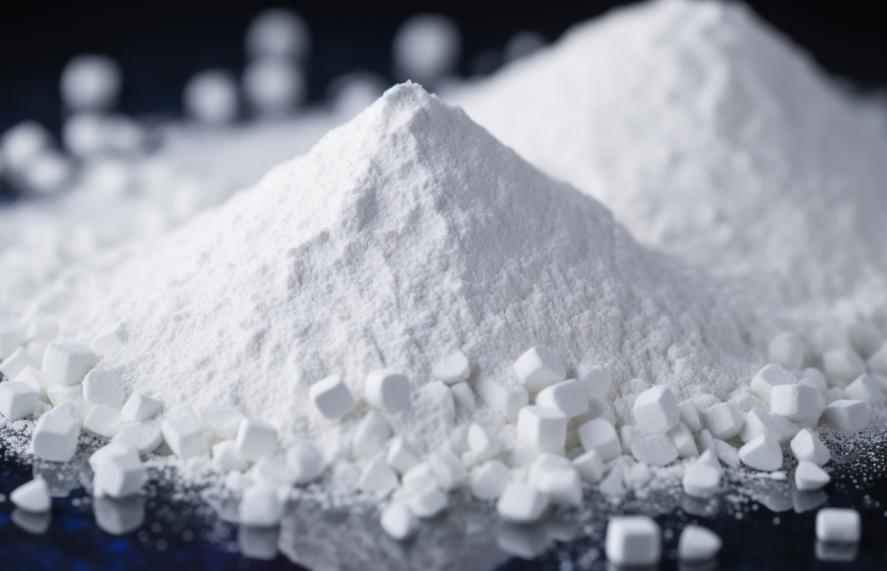Different Types of PVC Stabilizers: Here to Know
09/07/2024
Polyvinyl chloride (PVC) is a widely used polymer known for its versatility and affordability across various industries. To enhance its performance and durability, PVC requires stabilizers, which prevent degradation during processing and use. Stabilizers play a crucial role in maintaining the integrity of PVC products over their lifecycle. This blog explores the different types of PVC stabilizers, focusing on their applications, advantages, and considerations.

1. Lead-Based Stabilizers: Tradition and Transition
One of the Different Types of PVC Stabilizers like Lead-based stabilizers have long been integral to PVC formulations due to their exceptional heat stability and cost-effectiveness. They offer superior electrical insulation properties, making them ideal for rigid PVC applications such as pipes and profiles. Despite these advantages, the use of lead-based stabilizers has declined globally due to growing environmental and health concerns.
Lead-based stabilizers are appreciated for their robust performance in high-temperature environments, which is crucial for applications like electrical conduits and automotive parts. However, their toxicity and potential for environmental contamination have prompted regulatory restrictions in many regions. Manufacturers like CHEMBROAD have historically supplied lead-based stabilizers, but are now focusing more on eco-friendly alternatives.
The phase-out of lead stabilizers has accelerated the development and adoption of safer alternatives, pushing the industry towards more sustainable practices. While lead-based stabilizers remain in use in some sectors where their unique properties are indispensable, the trend is clearly towards minimizing their environmental impact.
2. Calcium-Zinc (Ca-Zn) Stabilizers: Eco-Friendly Performance
As the demand for environmentally safe stabilizers rises, calcium-zinc (Ca-Zn) stabilizers have emerged as a leading alternative to traditional lead-based options. These stabilizers offer good thermal stability comparable to lead-based counterparts while being non-toxic and more environmentally friendly. They have found wide application across various sectors including food packaging, medical devices, and construction materials.

One of the Different Types of PVC Stabilizers like Calcium-zinc stabilizers are particularly valued for their versatility in both rigid and flexible PVC formulations. Their ability to meet stringent regulatory requirements for food contact materials and medical applications underscores their suitability for sensitive environments. Manufacturers like CHEMBROAD have developed advanced formulations of Ca-Zn stabilizers to cater to diverse industry needs.
Despite their advantages, calcium-zinc stabilizers may sometimes be less effective than lead-based options in extreme high-temperature applications. This limitation prompts ongoing research and development efforts aimed at enhancing their thermal stability without compromising their eco-friendly profile.
3. Tin-Based Stabilizers: Clarity and Performance
One of the Different Types of PVC Stabilizers like Tin-based stabilizers, including methyltin and butyltin compounds, are renowned for their excellent heat stability and clarity, making them ideal for applications requiring transparency and durability. They are prominently used in clear rigid PVC products such as food packaging, medical devices, and consumer goods where aesthetic appeal is crucial.
The clarity and heat stability offered by tin-based stabilizers make them indispensable in sectors where product visibility and performance under varying temperatures are paramount. Their effectiveness in enhancing the mechanical properties of PVC, such as impact resistance and tensile strength, further extends their utility across diverse applications.
However, tin-based stabilizers typically come at a higher cost compared to other alternatives like calcium-zinc stabilizers. This cost consideration influences their usage patterns, with manufacturers often opting for tin-based formulations where specific performance attributes justify the investment.
4. Barium-Zinc (Ba-Zn) Stabilizers: Balancing Performance and Toxicity
One of the Different Types of PVC Stabilizers like Barium-zinc stabilizers offer a compelling alternative for both rigid and flexible PVC applications, where thermal stability and low toxicity are paramount. These stabilizers excel in preventing discoloration during processing, making them ideal for products like flooring, cables, and films that require aesthetic appeal and durability.
The thermal stability of Ba-Zn stabilizers ensures that PVC products maintain their structural integrity under varying temperature conditions, enhancing their reliability in diverse environments. However, achieving optimal performance may necessitate blending Ba-Zn stabilizers with other additives, a strategy often employed by manufacturers like CHEMBROAD to meet stringent performance standards.
In response to regulatory pressures and consumer demands for safer materials, Ba-Zn stabilizers continue to evolve, with ongoing research focused on improving their efficiency and environmental footprint.
5. Organic Stabilizers: Embracing Eco-Friendly Solutions
One of the Different Types of PVC Stabilizers like Organic stabilizers, including organic phosphites and epoxidized soybean oil (ESBO), have gained prominence due to their non-toxic nature and eco-friendly profile. These stabilizers are particularly effective in enhancing the stability of flexible PVC, making them suitable for applications in food packaging, medical devices, and other sensitive sectors.
The biodegradability of organic stabilizers aligns with sustainable practices, appealing to manufacturers like CHEMBROAD committed to reducing environmental impact. However, their effectiveness often relies on synergistic combinations with other stabilizers to achieve desired performance attributes such as heat stability and UV resistance.
As organic stabilizers gain traction in the industry, advancements in formulation technologies aim to optimize their compatibility with PVC resins while maintaining cost-effectiveness and regulatory compliance.
6. Mixed Metal Stabilizers: Synergistic Solutions for Enhanced Performance
One of the Different Types of PVC Stabilizers like Mixed metal stabilizers, such as calcium-zinc and barium-zinc combinations, offer synergistic benefits that enhance heat stability and weather resistance in PVC applications. These stabilizers are tailored to meet specific performance requirements across various sectors, including pipes, profiles, and cables.
The combination of different metals in stabilizers like calcium-zinc and barium-zinc provides a balanced approach to addressing multiple degradation factors, ensuring prolonged durability and performance of PVC products. Manufacturers like CHEMBROAD leverage these synergies to offer customizable solutions that optimize cost efficiency without compromising on quality.
Despite their advantages, the performance of mixed metal stabilizers can vary depending on the specific formulation and processing conditions. This variability necessitates thorough testing and formulation adjustments to achieve consistent results across different applications and environmental conditions.
The Role of PVC Stabilizers: Ensuring Longevity and Performance
PVC stabilizers are indispensable additives that ensure the durability, safety, and functionality of PVC products across diverse applications. They play several critical roles:

Preventing Thermal Degradation: Stabilizers protect PVC from heat degradation during processing and exposure to high temperatures in service, preserving the mechanical and chemical properties of the material.
Enhancing Weatherability: Stabilizers improve the weather resistance of PVC products, shielding them from UV radiation and environmental factors that can cause discoloration, brittleness, or cracking.
Ensuring Product Safety: Non-toxic stabilizers such as calcium-zinc and organic alternatives contribute to the safety of PVC products, particularly those in contact with food, water, or sensitive environments like healthcare settings.
Facilitating Processing: Stabilizers aid in the processing of PVC by improving its melt flow, reducing processing temperatures, and minimizing production defects such as surface imperfections or uneven color distribution.
Manufacturers like CHEMBROAD continually innovate in stabilizer technologies to meet evolving market demands for safer, more sustainable PVC solutions. By leveraging a combination of traditional and advanced stabilizer formulations, they ensure that PVC remains a versatile material of choice across industries while minimizing its environmental footprint.
Conclusion: Navigating the Future of PVC Stabilizers
The evolution of PVC stabilizers reflects broader trends towards sustainability and regulatory compliance within the plastics industry. While lead-based stabilizers have historically dominated due to their performance benefits, environmental concerns are steering manufacturers towards safer alternatives like calcium-zinc and tin-based stabilizers. Companies like CHEMBROAD are at the forefront of this shift, innovating new formulations that balance performance with environmental responsibility.




